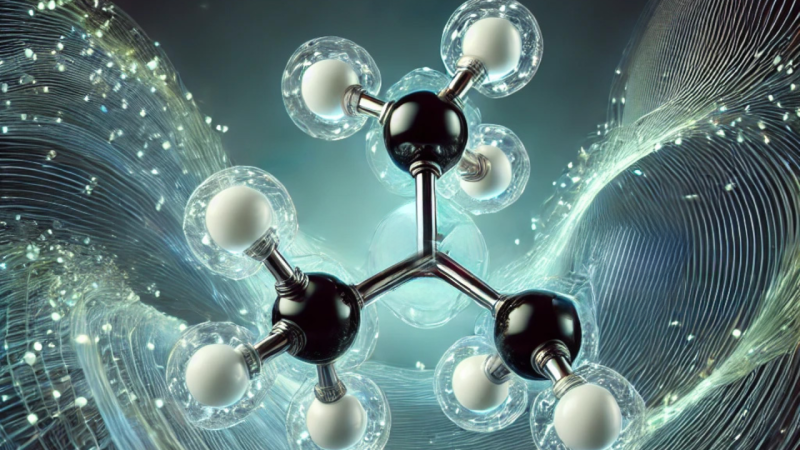What is Coefficient of Performance (COP)?
The coefficient of performance (COP) is a crucial metric that measures the efficiency of a heat pump. It reflects the amount of heat a heat pump can generate from a given amount of input energy. Specifically, the COP is expressed as the ratio of the heat generated (Q) to the power consumed (W).
COP = Heat Generated (Q) / Power Used (W)
For instance, a COP of 3 implies that the heat pump produces three units of heat for every one unit of power used. Essentially, the higher the COP, the more efficient the heat pump is at converting energy into heat.
The efficiency of a heat pump is a key factor in its overall cost-effectiveness. An efficient heat pump consumes less electricity, which directly reduces operating costs. This not only makes the heat pump more economical to run but also contributes to environmental sustainability by lowering energy consumption and greenhouse gas emissions. By focusing on improving the COP through these measures, users can enjoy both financial savings and enhanced performance from their heat pump systems.
A high COP (Coefficient of Performance) for a heat pump is extremely beneficial and has several important effects. One of the key benefits of a high COP is energy efficiency. A heat pump with a high COP can generate a significant amount of heat (or cooling) without consuming much electrical energy. This efficiency means that with a high COP system, less energy is needed to achieve the same level of thermal comfort, which significantly reduces your energy costs as less electricity is used.
What Influences COP?
Several factors influence the COP of a heat pump. Different types of heat pumps exhibit varying efficiencies. For example, air-to-water heat pumps typically have a lower COP compared to ground source heat pumps, as the latter can leverage the relatively stable temperatures of the ground for more efficient operation.
Moreover, the efficiency of a heat pump is sensitive to the ambient temperature. As the outside temperature drops, the efficiency of the heat pump generally decreases. This is because it becomes harder for the heat pump to extract heat from colder air, making the process less efficient.
Finally, the temperature of the water or air being heated (i.e. flow temperature) also impacts the COP. Higher flow temperatures require the heat pump to work harder, which reduces its efficiency. Consequently, maintaining a lower flow temperature can enhance the heat pump's performance.
Depending on how the heat pump is used, COP can have different meanings. COP in Heating Mode describes the efficiency of a heating system or heat pump when it is generating heat for a building. A higher COP in heating mode indicates that the system operates more efficiently, producing more heat while consuming less electrical energy. A higher COP is desirable because it leads to lower operating costs and a reduced environmental impact, making the system both economical and eco-friendly.
COP in Cooling Mode refers to the efficiency of an air conditioning system or heat pump when it is in cooling mode. A higher COP in cooling mode means that the system provides more cooling with less electrical energy. Just as with heating mode, a higher COP in cooling mode is desirable to reduce energy consumption and operational costs.
HVAC systems can operate at different capacities, and the COP can vary depending on the load. The COP can be measured at full load (100% capacity) and partial load (e.g. 50% capacity). Many systems tend to be less efficient at partial loads. Therefore, it's important for a system to maintain a good COP even at partial loads to ensure efficient operation under varying conditions.
What is Seasonal COP?
Seasonal COP (SCOP) accounts for the efficiency of the system over a longer period, typically a heating or cooling season. It considers seasonal fluctuations in performance, such as changes in outdoor temperatures. A higher seasonal COP is particularly desirable for heating applications because it reflects the overall efficiency of the system over an extended period, providing a more comprehensive measure of performance.
SCOP is expressed as a ratio of useful heating output to the total energy input required to produce that heat, averaged over a heating season. A higher SCOP value indicates greater efficiency, meaning the system provides more heating output per unit of energy consumed.
Why is SCOP Important?
SCOP is an essential metric for several reasons. It reflects real-world performance by providing a comprehensive assessment of how a system operates under varying conditions throughout the heating season. This makes it more accurate and relevant than single-point measurements like standard COP. A higher SCOP translates to lower energy consumption for the same level of heating, which reduces energy bills and minimizes environmental impact. Additionally, SCOP allows users to compare the efficiency of different HVAC systems and heat pumps, enabling them to make informed purchasing decisions. It also serves as a benchmark for meeting energy efficiency standards and obtaining certifications such as Energy Star or similar programs. By promoting the use of high-efficiency systems with higher SCOP values, the HVAC industry contributes to global efforts to reduce greenhouse gas emissions.
How is SCOP Calculated?
Calculating SCOP involves a detailed analysis of system performance over an entire heating season, taking into account factors such as outdoor temperature variations, system efficiency at different loads, and seasonal climate conditions. The calculation begins with identifying the typical heating demand for the season based on regional climate data, including temperature fluctuations and how they affect heating requirements. Next, the system’s COP is measured at various outdoor temperatures and heating loads. Modern heat pumps often perform differently under partial and full loads, and these variations are factored into the SCOP calculation. A weighting system is then used to account for the frequency of different outdoor temperatures during the season, with more common temperatures having a greater impact on the final SCOP value. Finally, the total energy input required for the season is divided by the total useful heating output, resulting in the SCOP value. This formula ensures that SCOP reflects the overall efficiency of the system throughout the heating season.
Can COP be Improved Upon?
The coefficient of performance (COP) of a heat pump can be enhanced through various measures. Proper insulation minimises the heat loss from the building, thereby reducing the overall heating demand. This allows the heat pump to operate more efficiently, as it doesn't need to work as hard to maintain the desired indoor temperature. It is therefore probable that improved insulation can translate to a higher COP and better overall performance.
Additionally, the correct sizing of a heat pump will make a significant difference. Selecting the appropriately sized heat pump is critical for optimal efficiency. An oversized heat pump can lead to inefficiencies, as it consumes more drive energy than necessary to meet the heating requirements. Conversely, an undersized heat pump will increase the power needed to generate heat required and adversely affect the COP ratio.
Ensuring the heat pump is correctly set up and maintained is essential for maintaining high efficiency. Incorrect settings or lack of regular maintenance can lead to suboptimal performance, reducing the COP. Regular check-ups and adjustments can help maintain the heat pump’s efficiency and prolong its lifespan.
It is important to note that the COP value is not constant and can vary based on operating conditions, outdoor temperature, and the quality of the heat pump. Therefore, it is advisable to carefully compare different heat pump models and select a system with a high COP. A good COP is an indicator of quality and efficiency, leading to lower operating costs and a positive environmental impact.
How can COP be Maintained Long Term?
Preserving the Coefficient of Performance (COP) of any heat pump through regular maintenance and optimal use is essential for making the most out of any size system.
It is necessary to have a heat pump inspected by a qualified technician at least once a year. During these inspections, the technician can check all components to ensure they are functioning correctly and address any issues before they become major problems.
That isn’t to say that there are not maintenance activities one can complete without the need of a qualified technician. Dirty or clogged filters impede air circulation, causing the heat pump to work harder. Regularly check the filters and clean or replace them according to the manufacturer's recommendations to maintain optimal airflow and efficiency.
And it is not only filters that can become impeded due to dirt and debris. If access allows, keeping the unit itself clean means better heat transfer, improving the system's overall efficiency.
Away from hygiene, monitoring refrigerant levels is also incredibly important. Low refrigerant levels can significantly impair efficiency, so maintaining the correct level is essential.
Optimising the performance of any heat pump, however, involves more than just routine maintenance. By adopting strategic usage practices, performance and longevity can be enhanced.
Avoiding sudden temperature changes, for example, will prevent an overload to the heat pump. Furthermore, a building that is well-insulated and with doors and windows that are properly sealed helps to maintain a stable indoor temperature, reducing the workload on a heat pump and improving its efficiency.
Improving and maintaining the COP of any heat pump system involves a combination of regular upkeep and strategic operation. Key practices include regular inspections, replacing old and dirty filters, and deploying proper insulation and sealing. With these measures, not only are COP values kept, but it also keeps energy efficiency high leading to lower operating costs and environmental impact.
Related News

Decarbonising Heating in Historic Education Buildings with Heat Pumps

What is R290 (Propane)?
